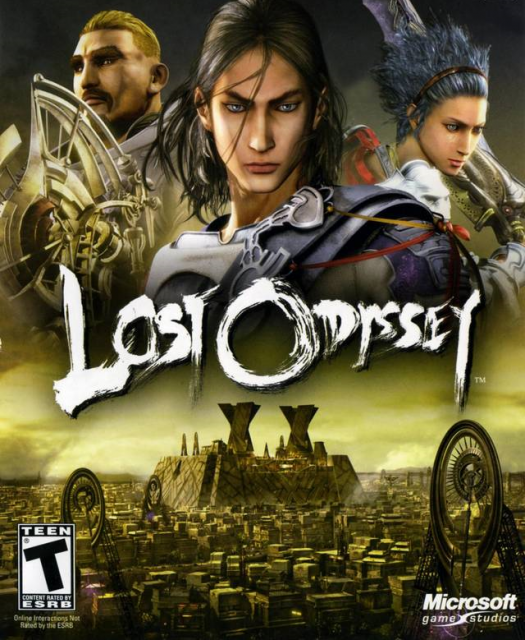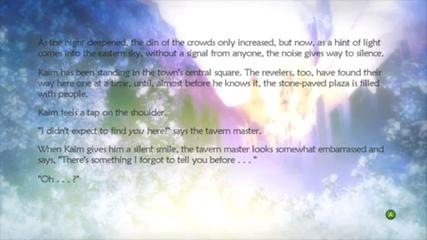Embarking on A Thousand Years of Dreams
By thatpinguino 17 Comments

Lost Odyssey came and went on the Xbox 360 in what felt like a flash. Somehow a game designed by Hironobu Sakaguchi and orchestrated by Nobuo Uematsu, two of the driving forces behind Final Fantasy’s heyday, has been largely left to the annuls of history and the minds of JRPG superfans. Perhaps the problem was the game’s JRPG-ness on a largely western console. Perhaps the problem was the Mistwalker name on the box, rather than Square-Enix. Perhaps the issue was the Western RPG takeover that was occurring when Lost Odyssey was released, what with Mass Effect, Oblivion, and The Witcher capturing the RPG market. Whatever the reason, Lost Odyssey should not have come and gone. Lost Odyssey broached topics that very few games cover, like the value of mortality and the value of faith. Lost Odyssey approached these topics with a subtlety and weight that I have not seen before or since, and it did so using a tool that games rarely embrace: short stories.
When I say that Lost Odyssey used short stories, I do not mean that it had a bunch of “lore” or story books, like an Elder Scrolls game or a Dragon Age game. The short stories told in Lost Odyssey are called the “Thousand Years of Dreams,” and they are the memories/dreams of Kaim Argonar (with a few exceptions), the game’s main character. Kaim is an immortal with amnesia. Throughout the game, certain stimuli can trigger one of his latent memories from his thousand-year life. These stimuli can be simple, like visiting an inn or seeing a family. They can also be dramatic, like being locked in prison or walking through a wind storm. Regardless of the trigger, once a dream starts, the player is presented with the title of the short story, a background image, and an appropriate soundtrack. These stories are then presented in an almost Powerpoint-like blend of text, animation, background changes, and audio. I know Powerpoint does not necessarily inspire a ton of emotional resonance, but the paragraphs blended with accentuating animation, music, and images provide an added tonal weight to the stories. The music will often shift to somber piano as Kaim witnesses another tragedy, or include the bluster of wind as Kaim talks about people walking against the wind. Text will often fall into place for emphasis, or appear suddenly to mimic a sudden event. The artwork used in the dreams will often mimic the story as well, such as flashing white when Kaim steps into the light after a long time in a jail cell. All of these little touches add an element of showmanship to what could have easily been static text. The end result is a series of didactic vignettes, sharing Kaim’s experiences on his seemingly endless trudge through a mortal world he inhabits, but does not belong to.

All of the trappings in the world would not have mattered if the “Thousand Years of Dreams” were poorly written or poorly translated. Thankfully, each of the stories were written by Kiyoshi Shigematsu with the skill that one would expect of an established author, translated to English exceptionally well by Jay Rubin, a Harvard professor and expert Japanese translator. The result of their collaboration is a series of short stories that show a deftness and understanding of Kaim’s privileged, yet tragic position as an immortal. Kaim is forced to witness the deaths of wives, children, friends, and acquaintances endlessly over the course of his life, with no hope that he will ever meet them in the afterlife, if there even is one. Kaim has been through so many wars as a mercenary, that he understands the difference between allies and enemies is circumstance, not moral authority or correctness. But regardless of all of his loss and perspective, Kaim still participates in the conflicts of the moment. Kaim still creates fleeting relationships that he knows he will outlive. He keeps living and loving like a mortal, despite his own immortality for a thousand years of seeming futility. He becomes more and more jaded, but does not become cynical of mortals and their doings.
In each story, Shigematsu and Rubin manage to give just enough detail to each supporting character as to make them come alive, but still leave enough ambiguity as to display the fading state of Kaim’s memory. Kaim remembers the professions and personalities of acquaintances, but not necessarily their names. Even his own wives and children’s names fade from his memory, yet their last words and his regret about not saying more still remain. The short stories do not bother introducing a bunch of proper nouns for locations or countries, because those proper nouns are not what matter. Too often in JRPG stories the jargon of their worlds overwhelms the human motivations of their characters. In the “Thousand Years of Dreams”, those proper nouns are omitted unless they are somehow crucial to the story at hand. This omission of proper nouns also adds to Kaim’s sense of age since the countries, towns, and people he is talking about could very well not exist anymore. Thus, the “Thousand Years of Dreams” contains a bunch of stories about tiny droplets of time, in an ocean of a life that could be anywhere at any time. The stories are both specific and universal at the same time. It is this very quality that makes Kaim’s stories so relatable and impactful. There is no talk of great battles and deities and heroes and magics most foul. Instead, Kaim tells stories about a little girl he met at an inn.
To shed some light on these exceptional stories, I am going to do a running series of literary analyses on each of the 33 dreams. I encourage everyone to pick up Lost Odyssey and check out this under-played classic.
